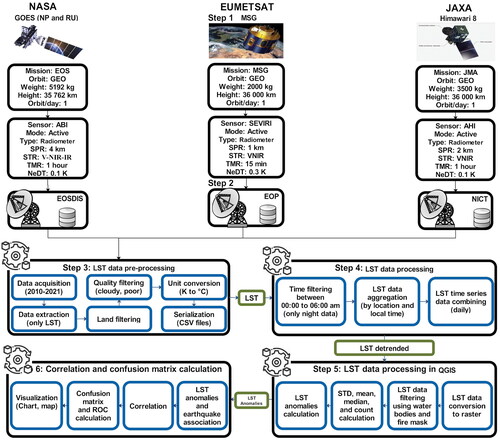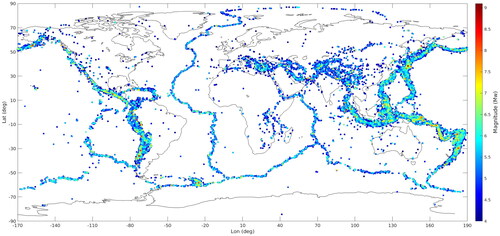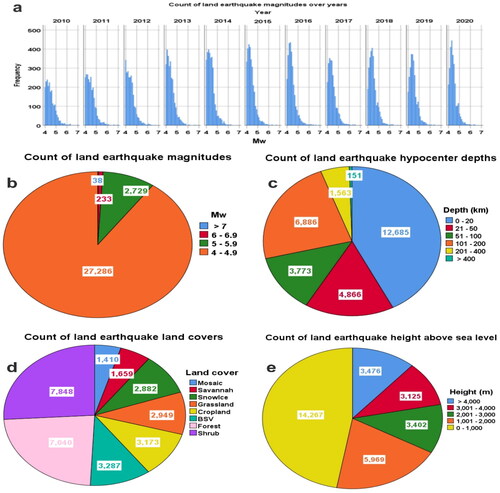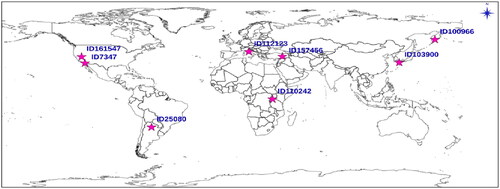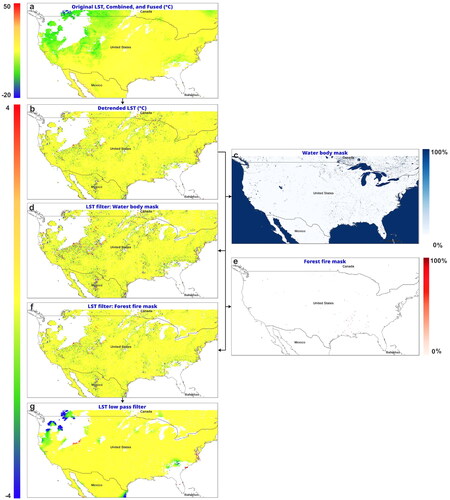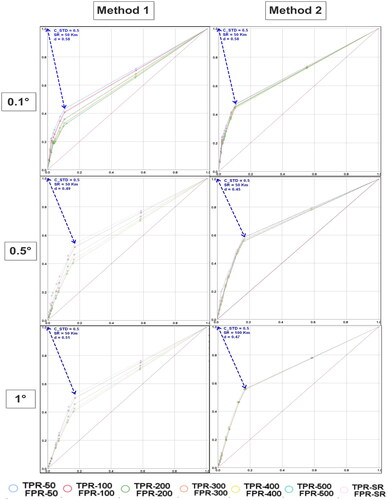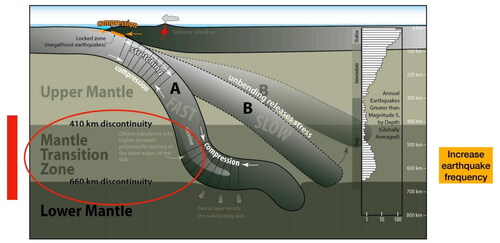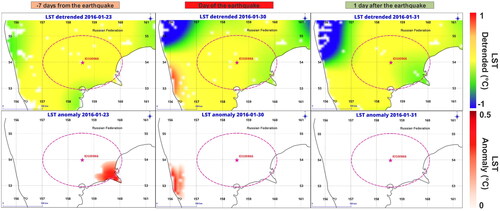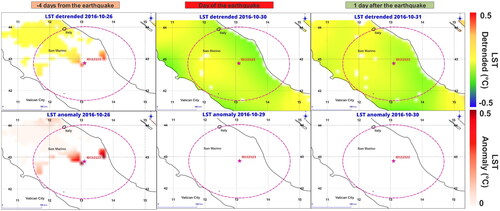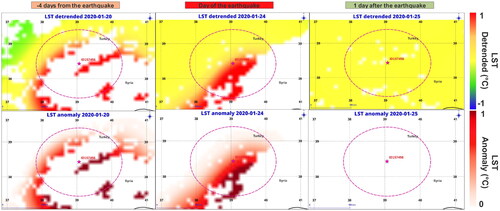Figures & data
Table 1. LST data quality products.
Table 2. Classification details of magnitude, depth, and altitude.
Table 3. Details of the 8 case studies presented.
Figure 7. Map visualization of a) pixel percent, b) STD of detrended LST (°C), c) median of detrended LST (°C), and d) mean of detrended LST (°C) between 2010 and 2021.

Table 4. The details of the used raster configuration and grid sizes.
Table 5. Definition of the confusion matrix elements and derived parameters.
Figure 9. Confusion Matrix parameters, ACC, G-mean, D, AUC, and DOR figures of merits for LST anomalies by earthquake magnitude (from Mw = 4 to 8).

Figure 10. Confusion Matrix parameters, ACC, G-mean, D, AUC, and DOR figures of merits for LST anomalies by hypocenter depths (from DP0 to DP5).
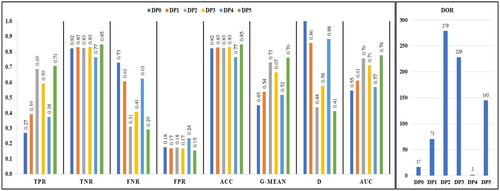
Figure 12. Confusion Matrix parameters, ACC, G-mean, D, AUC, and DOR figures of merits for LST anomalies by land cover type.
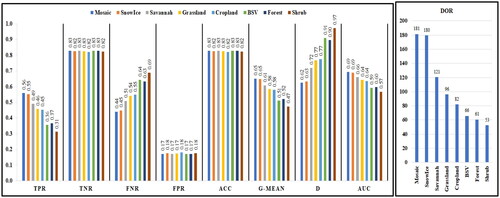
Figure 13. Confusion Matrix parameters, ACC, G-mean, D, AUC, and DOR figures of merits for LST anomalies by altitude.
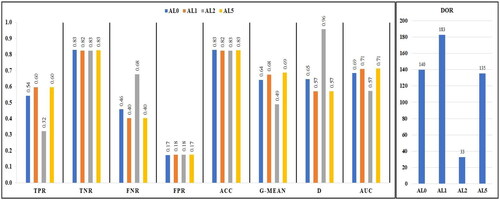
Table 6. The average LST anomalies (°C) classified for Mw > 6, and 8 a) land covers, and b) 3 elevation classes.
Table 7. The average LST anomalies (°C) classified over Mw > 6.
Table 8. The measured LST anomalies (°C) for all strong studied earthquakes between 2010 and 2021.
Figure 18. Mean LST anomalies with a searching radius of 50 km in time series for the 8 studied earthquakes 1 week before and after their occurrence.

Table 9. Comparison table of this study with some related works.
Supplemental Material
Download (19.7 MB)Data availability statement
The GOES/ABI, MSG/SEVIRI, and Himawari-8/AHI data used in this study comes from the Copernicus global land service https://land.copernicus.eu/global/products/lst and earthquake data comes from the open USGS earthquake database available at https://earthquake.usgs.gov/earthquakes/search/.

